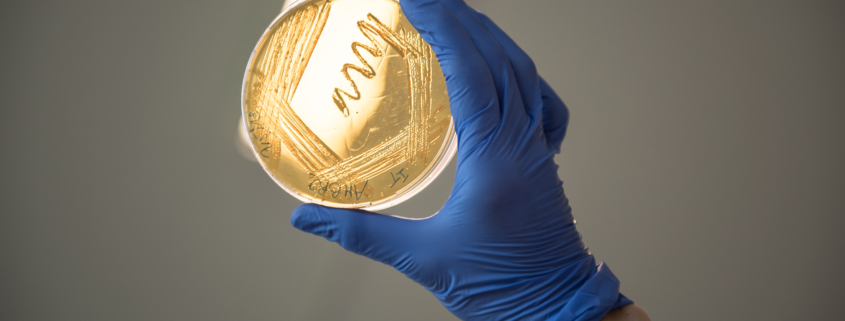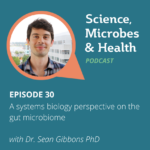Bridging the Gap Between Probiotic and Microbiome Research
By Prof. Sarah Lebeer PhD, University of Antwerp, Belgium
September was an eventful month for me, as I had the privilege of participating in various scientific gatherings. These include co-organizing the 14th Symposium on Lactic Acid Bacteria (LAB14) in the Netherlands (LAB symposium), attending the European Helicobacter and Microbiota Study Group workshop (EHMSG) in my hometown of Antwerp, joining the Human Microbiome Symposium at EMBL Germany, and participating in the 7th International Conference on Microbial Diversity conference in Parma. These events provided me with valuable opportunities to share insights from our Isala vaginal microbiota project (https://isala.be/en) and to engage with leading scientists in the fields of the human microbiome, fermented foods, and probiotics, such as Martin Blaser, Maria Gloria Dominguez-Bello, Curtis Huttenhower, Jeroen Raes, Peer Bork, Rob Knight, Gene Tyson and Paul Cotter, just to name a few.
Reflecting on these recent interactions, I find it intriguing that the term ‘probiotics’ is relatively infrequently used in discussions at typical microbiome conferences or sessions. It has struck me that a descriptive microbiome study in a specific cohort or patient group often garners more scientific recognition than a human intervention study involving probiotics, which target the microbiome to induce a particular change in health parameters. It’s worth noting that many large-scale solid microbiome papers are published in high-impact journals, whereas probiotic studies tend to find their home in journals with lower impact factors. This discrepancy exists even when most associations observed in microbiome studies are primarily descriptive rather than causal. I must admit to this bias in our own work, having recently published a substantial cohort study (the Isala study) on the vaginal microbiome with over 3300 participants in Nature Microbiology, while our probiotic studies typically appear in lower-impact journals (e.g. this study). Although our Isala study yielded valuable insights, it could only associate 10.4% of questionnaire responses with features of the microbiome composition, with associations rather than causal relationships identified. Nevertheless, we plan to explore these findings further through intervention studies (including probiotic, dietary, and lifestyle interventions) and more mechanistic research (https://isala.be/en ). Similarly, the extensive gut microbiome cohort study conducted by Jeroen Raes’ team in Belgium and published in Science could explain only 7.6% of the associations with the extensive metadata collected.
While we do all acknowledge the value and strength of such large microbiome cohort studies, probiotic intervention studies offer a unique advantage in investigating causality. In such studies, live microorganisms (or mixtures thereof) are deliberately administered in specific formulations and evaluated for their health benefits to the host. Probiotics often do not work via (gut) microbiome modulation (as more broadly discussed in this ISAPP podcast episode), but undoubtedly interact in the same complex environment. ISAPP has long championed the importance of rigorous and well-controlled clinical trials to assess the value of interventions, but the results, while scientifically valuable, are seldom sensational. This shouldn’t come as a surprise because modifying the health status of a living host with a single intervention, be it a probiotic or a single drug molecule, is a complex task. If you’ve ever listened to a lecture or read a paper by ISAPP President Dan Merenstein (if not, check this ISAPP podcast episode), you’ll recall his emphasis on the high number-needed-to-treat (NNT) in many traditional drug interventions. If these NNTs are compared for some drugs with probiotics, probiotics actually do not perform badly, and often outperform other interventions in terms of safety.
Probiotics, by their nature, have a multifaceted mode of action, attributed to their status as live microorganisms with an average of 3000 genes and probably even more bioactive molecules expressed. Their effects in a living host are diverse and context-dependent, involving complex modulation of biochemical, immune, and other pathways. While I haven’t conducted the statistical calculations myself, the likelihood of detecting a significant and large-scale effect in probiotic intervention studies does not appear high, especially given that the average probiotic intervention study involves around 74 participants, rarely exceeding 200 participants .
This limitation has contributed to an underwhelming reputation for the science behind probiotics despite the many health benefits demonstrated, as these trials are typically small in scale and constrained by limited budgets and limited number of parameters under investigation. Most of these studies are carried out by university and food company researchers with budgets significantly smaller than those in the pharmaceutical industry, where studies can cost around $40,000 per participant. The microbiome therapeutics and live biotherapeutics (LBPs) field, which includes probiotic products for therapeutic indications and routes, is gradually moving towards more expensive pharmaceutical-style trials, with some FDA-approved trials featuring GMP-produced LBPs. Success stories like REBYOTATM (from Ferring and Rebiotix) and VOWST (formerly SER-109, from Seres) have demonstrated significant benefits in specific conditions (C. difficile infection), which have reduced heterogeneity from the host side. Yet, participant numbers in these trials remain in the same range as many probiotic intervention studies.
Given the available funding from both private and public sources, organizing large clinical trials with specifically designed probiotics as LBPs for all promising health conditions under stringent pharmaceutical conditions is an unrealistic prospect. If probiotic strains can be delivered orally as food supplements, it is likely that current trial practices will continue to be preferred due to budget, logistical, and regulatory considerations, even though they may have limitations in claiming health benefits under less rigorous conditions. These studies, if conducted and analyzed diligently, can still yield valuable and meaningful results.
As scientists actively engaged in both the microbiome and probiotic fields, we should seek greater unity. We must recognize that the science of how live microbes interact with a living host is inherently complex and rarely boils down to a single mode of action resulting in spectacular effects. Although the intended use of probiotics and LBPs differs, both share similar scientific challenges. ISAPP’s definition of probiotics is a valid attempt to embrace this complexity and can apply to most microbial therapeutics or LBPs if the administered microorganisms are well-characterized and quality-controlled.
Let’s acknowledge that, despite their challenges, probiotic trials have already contributed and will likely continue to contribute) unique insights into the intricate world of host-microbe interactions, and these insights can be harnessed to improve human health.







